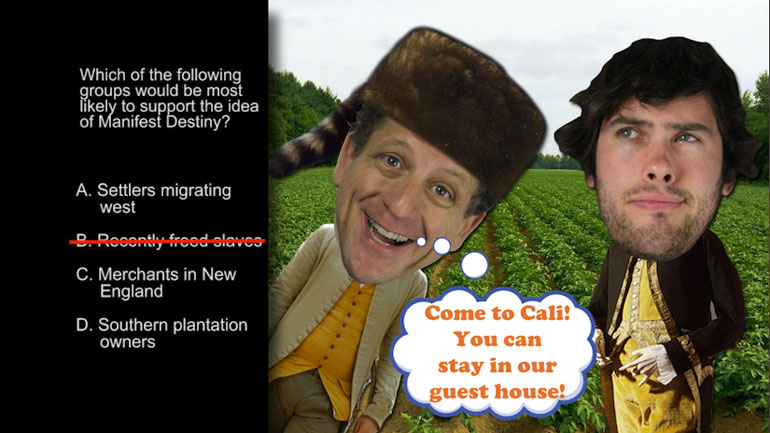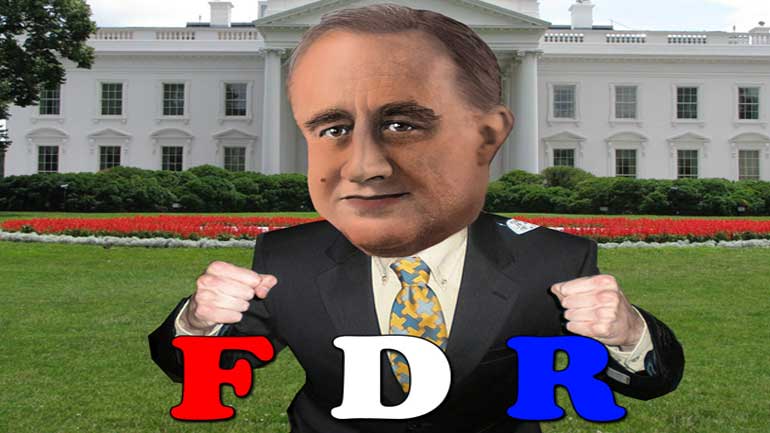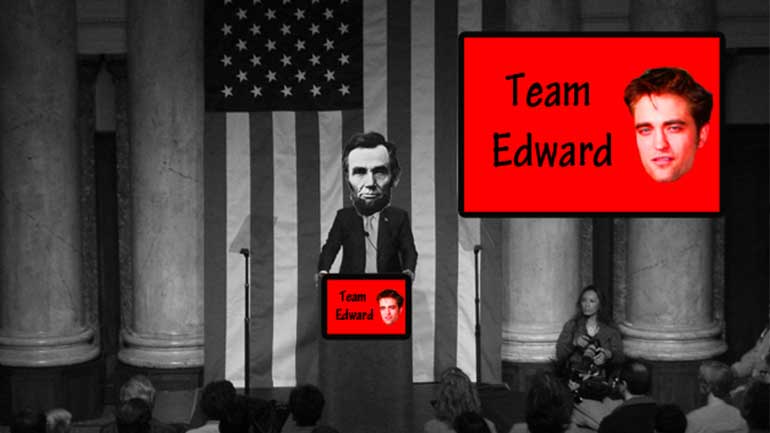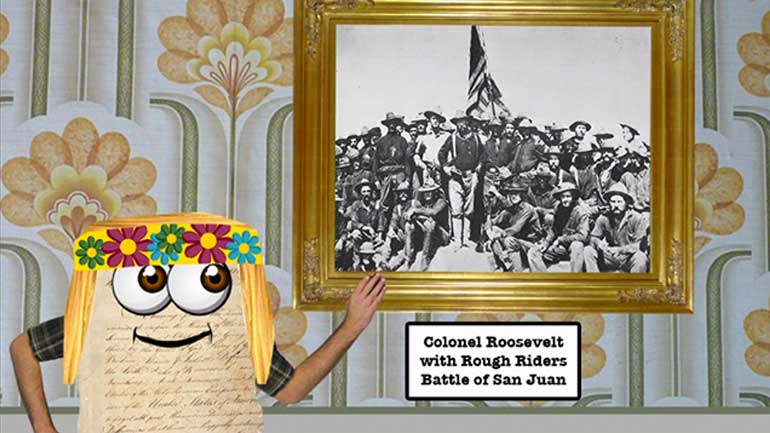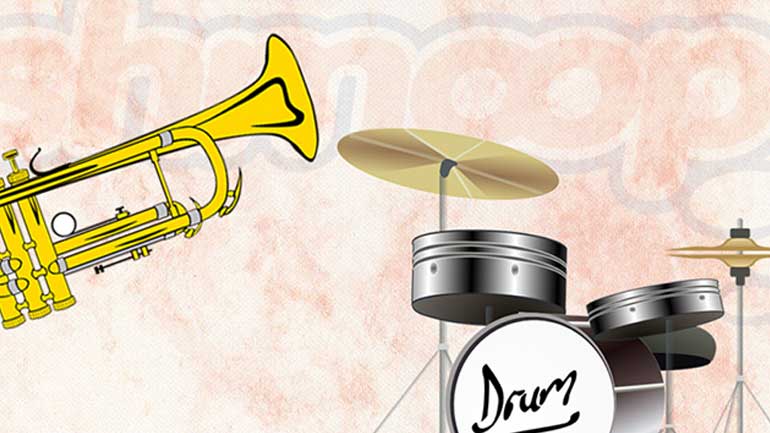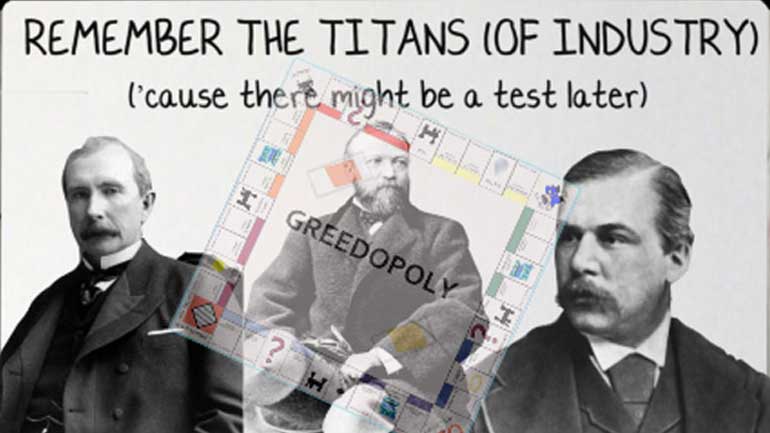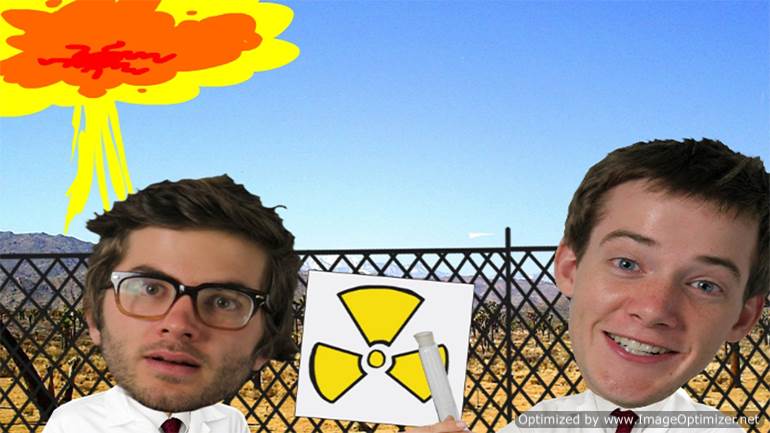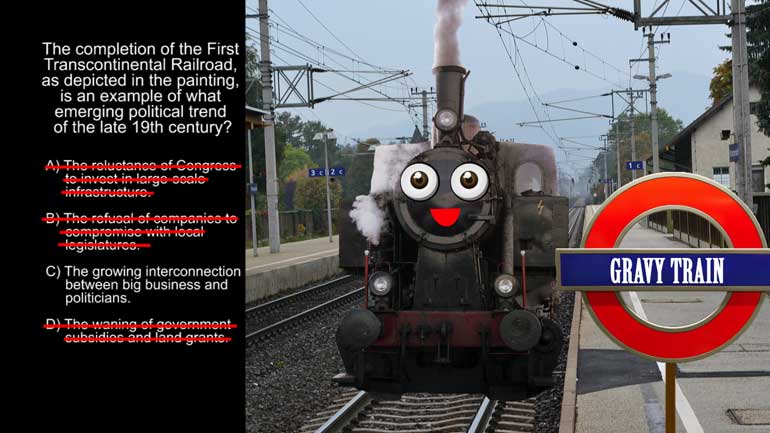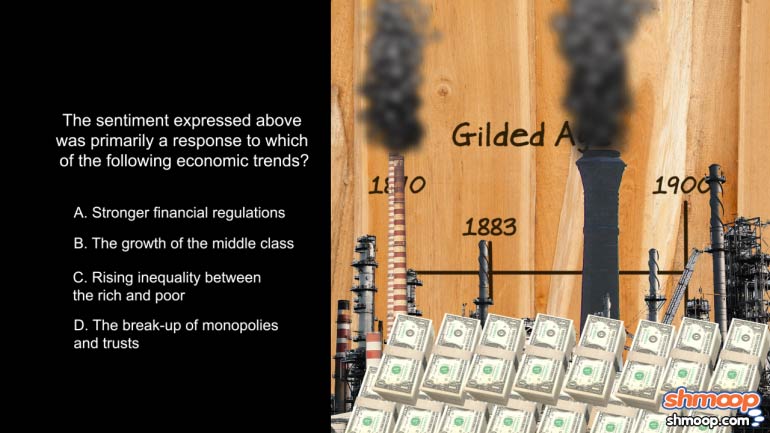ShmoopTube
Where Monty Python meets your 10th grade teacher.
Search Thousands of Shmoop Videos
U.S. History EOC Assessment Videos 64 videos
AP U.S. History 1.1 Period 5: 1848-1877. Which of the following groups would be most likely to support the idea of Manifest Destiny?
In the 1950s and 60s, people weren't just expressing their feelings toward the government—they were singing them, too. (Think Crosby, Stills, Nas...
Deal or no deal? FDR's New Deal provided hundreds of thousands of jobs in the public sector to bring the economy out of the Great Depression. It wa...
AP U.S. History 2.4 Period 9: 1980-Present 195 Views
Share It!
Description:
AP U.S. History 2.4 Period 9: 1980-Present. In the 1990s and 2000s, immigration patterns largely tended to be...what?
Transcript
- 00:00
[ musical flourish ]
- 00:03
And here's your Shmoop du jour, brought to you by immigration patterns,
- 00:07
the design of every handmaid ancestral quilt.
- 00:10
Yeah. All right, here's the excerpt.
- 00:12
[ mumbles ]
Full Transcript
- 00:15
[ mumbling continues ]
- 00:18
... by Congress and Men in Black.
- 00:21
Okay, and the question:
- 00:22
In the 1990s and 2000s,
- 00:24
immigration patterns largely tended to be... what?
- 00:28
And here are your potential answers.
- 00:30
[ mumbles ]
- 00:34
All right. Moving to another country is a pretty big deal.
- 00:38
There's a new language, new culture, new reality shows.
- 00:41
Well, maybe not so much the last one.
- 00:43
Let's see which answer best captures the kind of transition
- 00:46
made by immigrants to the U.S. in the last few decades.
- 00:49
In the 1990s and 2000s, were immigration patterns
- 00:53
A - located primarily in the American South?
- 00:57
Well, the South might be the center of American hospitality,
- 01:00
but the region sees relatively few immigrants
- 01:03
compared to the rest of the country.
- 01:04
Same goes for the Midwest. And that knocks out A and D.
- 01:08
Were immigration patterns at this time B -
- 01:10
evenly distributed across the country?
- 01:12
Well, no, quite the opposite, actually.
- 01:14
If you move to a new country, you'd probably wanna see some
- 01:17
familiar faces and speak your old language, right?
- 01:20
So you're probably gonna settle wherever you
- 01:22
can get that authentic curry biryani or, uh,
- 01:26
chorizo empanada... Anyway,
- 01:28
it means that in the 1990s and 2000s,
- 01:31
immigration patterns largely tended to be
- 01:33
C - clustered in a few states.
- 01:35
In general, immigrants tend to settle among their countrymen and women,
- 01:39
which is why many cities include neighborhoods like
- 01:42
Chinatown or Little Italy.
- 01:44
Makes sense, right? As a result,
- 01:47
places that experience high levels of immigration, like California and New York,
- 01:51
often continue to receive immigrants.
- 01:54
So C is the correct answer.
- 01:55
And you know, if Americans decide to move abroad, well,
- 01:58
maybe that means they've got Little Americas in countries all over the world, too.
- 02:02
Yeah, like that. [ chuckles ]
Related Videos
AP U.S. History Diagnostic 1. Relationships like the one shown in the image resulted in the development of...what?
AP U.S. History Diagnostic 15. How did groups like the ones represented by the image influence industry in America?
AP U.S. History Diagnostic 10. What led to the splintering of the political parties shown in the image?
AP U.S. History Diagnostic 11. The election results shown in the image led to...what?
AP U.S. History Diagnostic 12. How did the Reconstruction Acts open up political opportunities for former slaves?
